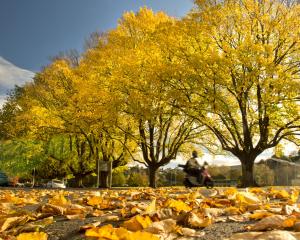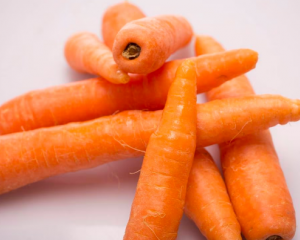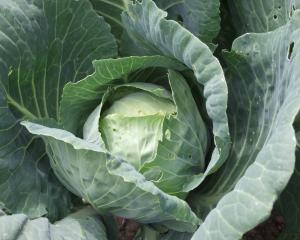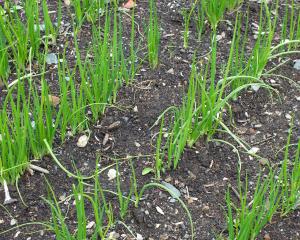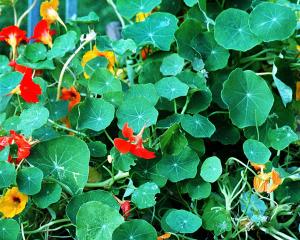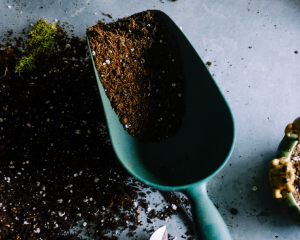The ideal shelter hedge is no more than 1.5m tall. Keep its base compact by clipping plants hard from the earliest stages of growth and keep the soil around them free of weeds.
Lonicera nitida, an evergreen honeysuckle sometimes sold as box, is suitable as a close-growing shelter hedge with its small-leaved, dense growth. Propagate from cuttings taken in autumn and winter. Growing best in moderate to heavy soils, it has a root system that does not travel far into neighbouring plots.
Golden akeake or akiraho (Olearia paniculata) and escallonia are other hedge plants suitable for the vegetable garden.
Broad beans and globe or Jerusalem artichokes will give temporary shelter to protect tender crops from strong earlysummer winds. Jerusalem artichokes, shallots and garlic are among the few crops that can be planted in the open ground at this time of year. Provided soil is not frozen or waterlogged, these hardy plants do best when planted now, coming away quickly in early spring.
Rhubarb plants that have been in the same site for years can be broken up with a sharp spade. Replant pieces in heavily manured, deeply dug soil. Keep autumn-sown onion seedlings free from weeds by lightly hoeing around the rows.
Even the smallest section should have space for a shrub or two, perhaps an azalea or rhododendron, a camellia, lilac or an evergreen native shrub. Identifying a site's soil condition will help determine what will grow best.
Transforming hard clay or a rocky, dry slope into an area of fertile, friable soil is hard work but there are attractive shrubs that will grow in poor soils. Some plants withstand salt-laden winds and others will grow with limited direct sunlight.
Avoid digging holes for shrubs in the middle of an uncultivated area. Circles of cultivated ground surrounded by firm soil collect rainwater. Dig over a larger site to surround the spot where the shrub is to grow, covering the soil later with groundcover plants or wood chips.
Shrubs suitable for seaside gardens include rosemary, ngaio (Myoporum laetum) and lilac. For lime-free soils, try rhododendrons, azaleas, kalmia, daphne, erica, camellias, pieris, magnolia, gaultheria and hydrangea.
For heavy clay soils, deutzia, firethorn (Pyracantha), spiraea and weigela are useful, while tamarix and the spindle tree (Euonymus) are strong enough for windswept gardens.
Rock rose (Cistus), rosemary and many South African and Australian shrubs are suitable for dry, stony soils.
For shade or beneath trees, rhododendrons, cistus and viburnum are options.
Blueberries (pictured above) are one of the most antioxidant-rich fruits and their popularity is increasing worldwide. The blueberry is native to the eastern United States and has been eaten by native Americans for centuries. The three main types are highbush, rabbiteye (the most heat-tolerant) and southern highbush.
Blueberries are often unsuccessful when tried by home gardeners, mainly because they will not do well in heavy clay soils and hate lime. Like rhododendrons, they prefer well-drained, damp, peaty soil. The fruit ripens from mid- to late summer.
Trees that are decorative and useful include the mulberry, medlar and olive.
The medlar (Mespilus germanica) is a hardy deciduous tree native to southeast Europe. It will grow to about 8m, has white flowers in spring and brown fruit. The fruit must be bletted (allowed to half-rot) before eating.
The black mulberry (Morus nigra) comes from western Asia, where it was sometimes used for feeding silkworms. It will grow to 10m or 12m and has been cultivated for centuries for its edible fruit, which looks a little like a blackberry. Do not grow near a path, as fruit will stain it.


